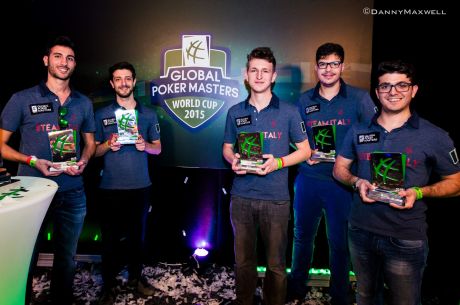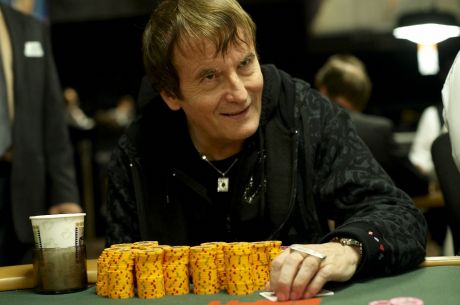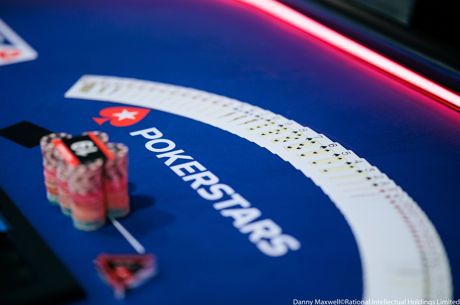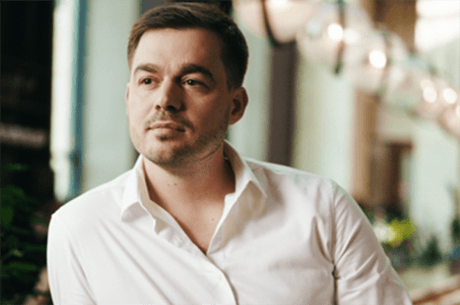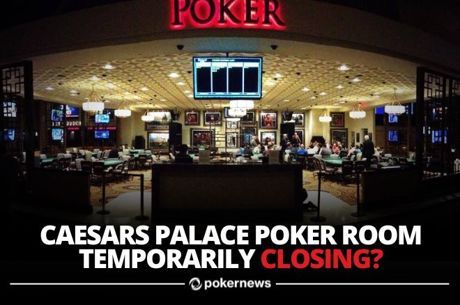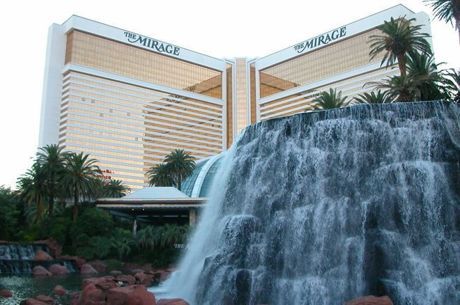Alex Dreyfus Announces the Global Poker League: "The Craziest Poker Project in Years"
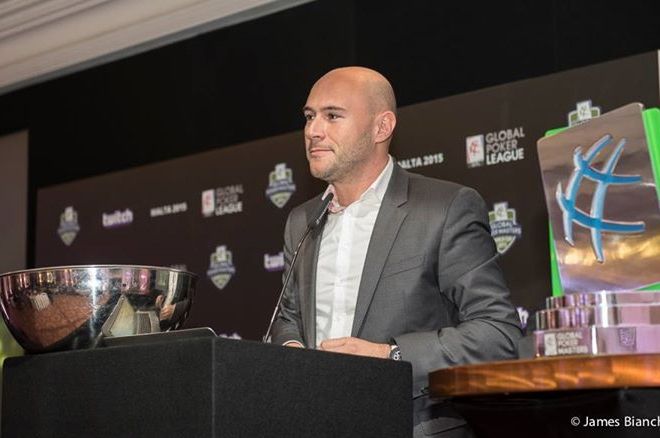
On March 22, 2015, Team Italy took down the first-ever edition of the Global Poker Masters, the "World Cup of Poker" thought and and organized by the Global Poker Index.
Seen by many in the industry as a very audacious bet, the competition strongly wanted by the GPI's CEO Alex Dreyfus turned out to be a solid success that has proved, among other things, that team poker is possible �� if done right.
Almost two weeks after the event, PokerNews sat down with Dreyfus to hear his impressions about the event and to unveil some juicy details of the upcoming Global Poker League, a project that the French entrepreneur defined as "the craziest that the poker industry has seen at least in the last 10 years."
PokerNews: Now that the lights of the European Poker Tour Malta are off and we have all been forced to get back to our regular lives, how do you feel about the first edition of the GPM? Are you satisfied with what you and the guys at the GPI put together?
Dreyfus: The answer to this is a sound yes! It was a great experience. As an entrepreneur, when you create a baby like that you get naturally very excited to see it taking shape and becoming something real. Luckily, I think I can afford to say that the competition went very well.
With the GPM, I think we have proved at least two things. First, we have showed everyone that team poker can work �� and this is something many didn't believe in when we announced the event. Secondly, we have proven that it makes sense for the GPI to organize and promote live poker events.
The GPM also marked the very first attempt to promote a live poker event on a platform like Twitch, something that can bring the game to a whole new audience.
Are you satisfied about the way the event worked on Twitch?
I think we can all agree that with the GPM we have in fact learned how to use Twitch to promote a poker event, and I believe this is a very important point. Sure, during the two-day event we made a lot of mistakes, but we also got a lot of traction thanks to Twitch.
Thanks to the fact that we have been featured on the site's homepage, we managed to put together something like 1.2 million views �� and that's a significant result. Of course, the engagement of the people on Twitch has been lower than, let's say, the one of people who followed the live stream on our site or on PokerStars.tv. But, while these were people who explicitly looked for the GPM's live stream, the ones on Twitch also included many who didn't know much about the game or were simply not looking for it.
Numbers at hand, I can tell you that that on Sport1.de or on PokerStars.tv, the average time spent watching the Masters was about 42 minutes, which is similar to the numbers we see for other big events like the EPTs. In France, we reached an impressive average of 61 minutes during the first day thanks to Patrick Bruel and to the very good job we did there to create some buzz around the event.
Let's not only talk about the good things, though. Is there anything that did not go as you would have liked, anything that left you dissatisfied?
Yes. I am disappointed and frustrated about the fact that I didn't manage to get a proper traction about the event other than in France. I think we could have definitely have scored bigger international coverage. However, we have to admit that we probably didn't have the structure needed to achieve something like this, as at the GPI we are a small team and we have limited resources in some fields. Also, it is very difficult to convince mainstream media to talk about something about poker that has never existed before.
The good side of it is that now we have something to show, and this will make the process much, much easier in the future.
Also, I am a bit frustrated about the fact that two big US-facing poker media did not talk about the event at all. You know, just because they believe that the GPI is a competitor, they decided not to cover any of our initiatives �� and this is obviously reducing our exposure in the US. To be completely honest, this is becoming a bit ridiculous.
Going back at Twitch, I also think that we could have done more to engage the people who were following the event there. We should have been more present in the chat, and we could have done more to connect with the audience there.
Besides that, we have done it. It's done. The players loved, and this is extremely important for me. Eric Danis, Kara Scott, Tatjana Pasalic, the commentators �� they all did a really great job, and this made the first edition of the GPM a success.
What about next year then, should we look forward to the second GPM in 2016?
Yes, I can already confirm that there's going to be another edition of the GPM in 2016. Right now, we are reviewing three potential hosts. One is the EPT Malta, while the two others would bring the event to a totally different place.
We may also consider to hold the GPM in US, but this depends on the current strategic partners we are discussing with. To give you a preview of how things are going to be, I can already tell you that we are thinking about increasing the number of teams in the competition and to also add at least one more day.
We would really like to reduce the variance as much as possible, and for that we will need to adjust the format and allow people to play more hands for a longer period of time. We want the Masters to be about skill, not about luck.
Before the Masters kicked off, you often mentioned that the event in Malta would be followed by a new competition named the Global Poker League, something you once defined 'the missing piece of the puzzle.' When will we see that?
After the World Series of Poker, the first season of the GPL will most likely start in August or in early September. It will be a 10-week competition that will last for three to four months.
The idea behind the event is simple. We, the GPI, want to "sportify" poker. This does not mean that we want to make poker a sport, but that we want to use same logic that runs behind the sports industry to promote poker. If we want to serve poker-related content to the media on a weekly basis, and if we want people to talk about poker, we need to build a platform �� a league that will give everyone a reason to be engaged and interested in the game.
Unfortunately, today there are only a very few players that people are passionate about, and that's partially due to the great success that online poker had over the past years. With more and more people coming from the online world, it often happens that the final tables of the most important tournaments are led by players that people don't know, guys who are very good at poker but who miss a fan base.
In my opinion, if you want poker to grow and to become mainstream, you need to create engagement and a fan base, and I believe the only way to do that is through team poker. The formula worked well with the Masters, but that's an event that happens only once a year and only for a few days. Now that we know that team poker can work, we want to build something new, something much bigger than that.
Let's get into the details then. Who will we see at the GPL's tables?
In 2015, the first edition of the League will involve eight teams of seven players each. The team members will be selected in a draft that will be held either during the WSOP or right after the event. Each team will most likely include three players from the GPI 300 or GPI 500, two wildcards and two qualifiers.
As for the qualifiers, there are going to be two different ways to get a spot in the GPL. If on one side there will be the possibility to qualify online for the event, something much more interesting will happen with live poker.
Can you share a little more about that with us?
Our plan is to engage with a number of the 1,400 casinos that currently have a partnership with the GPI or HendonMob and let live poker around the world support the growth of the GPL. Ideally, this means that people will be able to go to the casino next door, play, and compete with people from all over the world to get themselves a spot at the GPL and then play with some of the best poker players in the world.
In year one, we aim to start with a dozen casinos, then we are sure the number will grow. After all, the rooms that will join us in our adventure will get the opportunity to offer something completely new to their customers.
What about the format of the event, are we going to see something similar to what we saw in Malta during the GPM?
I think it's too early to talk about the format. We learned a lot from the GPM and we will definitely use the platform we created for the Masters also for the GPL. However, we plan on improving it with the support of the players and the team owners.
As I said, our mission is to reduce the variance and to give the teams the opportunity to develop a real team poker strategy, something along the lines of what we have seen at the Masters.
As in Malta, we will live stream every single event. We have our deal with Twitch, and we also have ongoing negotiations with other media partners. As it's going to be a recurring event, we believe it's important for us to create engagement, to generate interest, to create buzz.
All in all, the GPI is going to invest between $3-$5 million in the project, and this shows you that we are taking a big risk. We know that the GPL could fail, and we know that if we were to fail, we would also damage everything we have done so far. However, I believe that the GPL is the most valuable asset and project we can develop. It connects online poker to live poker and, at the same time, it doesn't compete at all with the existing circuits.
Forgive me for saying so, but that's somehow hard to believe. How can a three- to four-month-long poker event that involves some of the best players in the world not conflict with, let's say, the WPTs or the EPTs?
It's simple: if you want to be part of a team, you need to play in these events, or else you won't get a top spot in the GPI rankings and you won't get the chance to be selected by any of the team owners. Also, it's important to stress that we won't be taking away even a single cent out of poker's ecosystem. Players at the GPL will not pay for anything: participation fees and travel expenses will all be on the teams' owners. As it happened in Malta for the GPM, we plan to organize the events in connection with other big festivals, and this means that we may actually help the tournament organizers to get some big names that, who knows, maybe would not go otherwise.
The GPI will never create any open event as there is no need or space for additional circuits, tours, or poker tournaments. We are very clear and transparent about that. That is not our role and it will never be.
When you say that the GPI plans to invest up to $5 million in the project, that sounds like a pretty serious amount. Is the GPI really going to self-finance it?
Up until now, for almost three years, the GPI has been funded solely by its shareholder, and we are ready to support this investment and project. However, we are in advanced discussions with an American group or, even better, with different parties in the US.
This would allow us to actually develop the project in the way we think it's best, and to use these parties' exposure and strategic assets to make it a bigger success than it would be if we were to do it on our own.
Why should a player look forward to playing at the GPL? If the GPM was about 'national pride,' what is the League about?
The answer is very simple: it's about money and exposure. Each team owner pays a fee to join the league, and this money goes to create a prize pool that is integrated with even more money coming from the GPL. At the end of the season, the teams on top of the leaderboard will share the prize pool. This will allow the team owners to get a good return on their investment and, at the same time, will reward the players with some good money prizes.
After the first couple of years, we hope that mainstream sponsors will join us and bring even more liquidity into the game. Our idea is to build a new ecosystem that is going to be fully independent from the one we know today, and this will allow players to make even more money than they do today.
To be clear: the GPL is not going to replace their professional activity, it's just going to be the cherry on the cake that will bring exposure, success, and money to the best ones.
How about the early investors and team owners? Even if I have the feeling that you will not name names, do you mind telling us something more about them? Who are they?
Right now, we have four team owners onboard, but you are right, it's too early to name names. We are taking our time because it's important for us to get the right people. We want real partners, not people coming to take only one shot at it. We are looking for people who like the idea and are ready to commit for two or three years.
During Season 1, and probably also during Season 2, the teams are going to be owned by poker players or poker fans who are keen on spending money not to play themselves but to build an asset, a brand �� to create something valuable within the poker world.
Today, a backer who spends $100,000 in a tournament, often ends up with their money being gone after only two days �� unless they win, of course. With the GPL, whatever the investment needed is, people are going to get something much different that can last much, much longer. They are building assets, brand, goodwill. They will own a company (a franchise) that will be part of the League.
Do you already know where the GPL events are going to take place? Is this going to be a 'European' event such as the Masters?
No, the GPL will be a global event and it's going to be played most likely between the US and Europe. Team owners can be from anywhere, though. Right now, we already have the commitment of someone who is not European nor American. And, well, as from the players, they can also be from anywhere in the world.
Get all the latest PokerNews updates on your social media outlets. Follow us on Twitter and find us on both Facebook and Google+!

